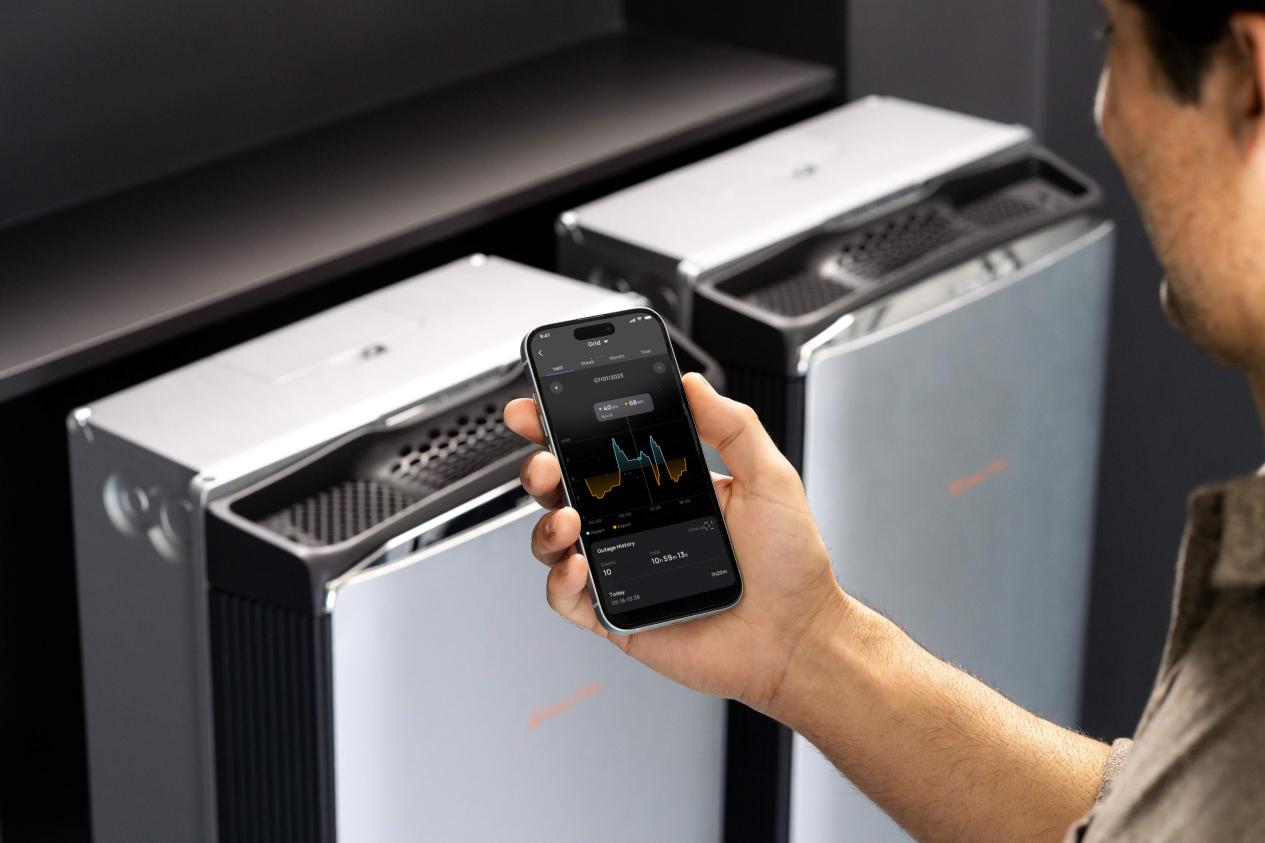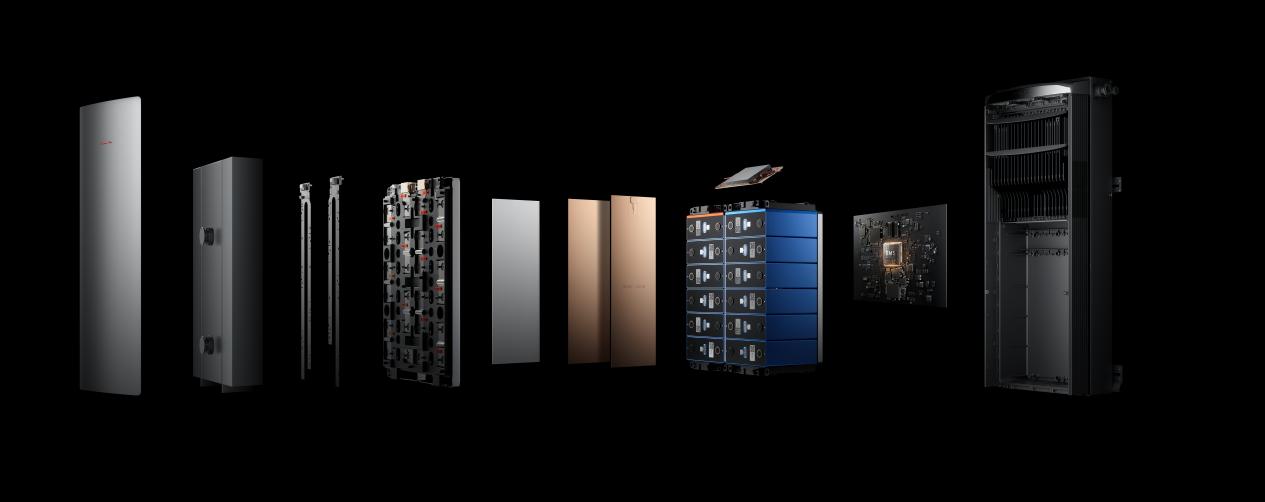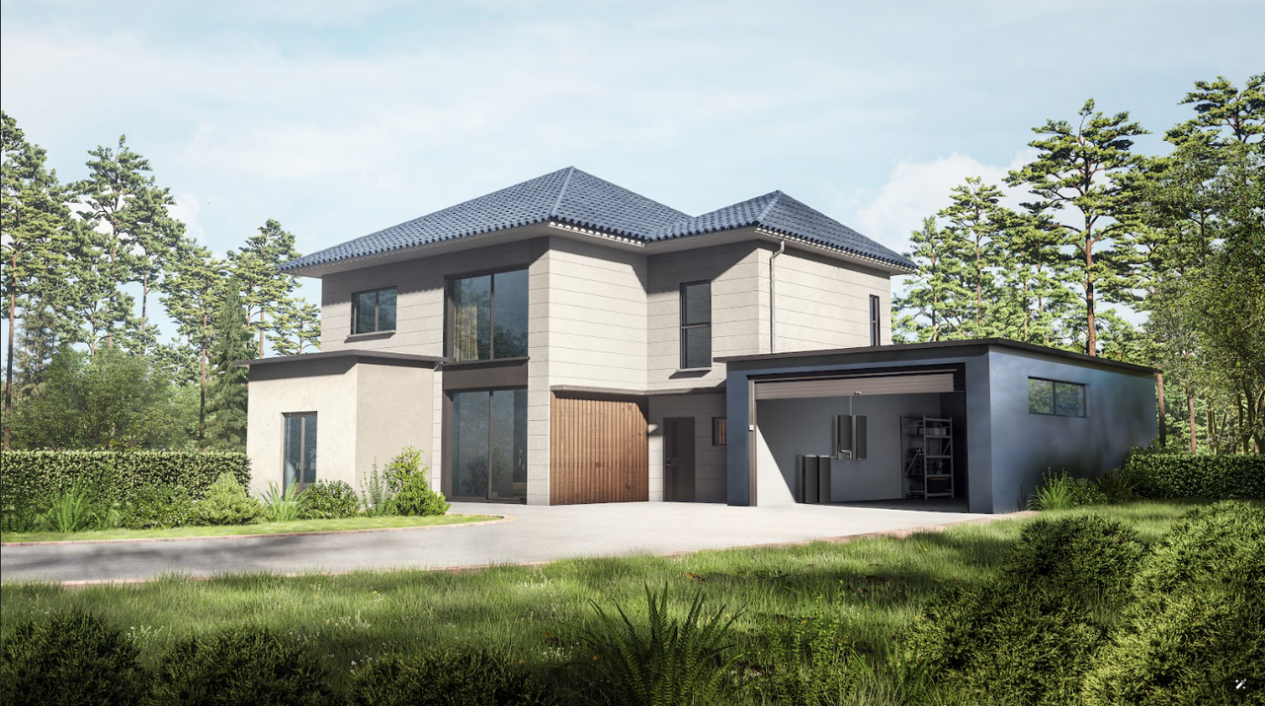How to Match Solar Panel Inverter Size to Your System Output
- Why Solar Panel Inverter Size Matters for Your System
- Oversized vs. Undersized: How Wrong Inverter Capacity Kills Efficiency
- Solar Inverter Sizing: The 1:1.15 Ratio Rule Explained
- Choosing the Right Solar Power Inverter for Different System Types
- How to Size Your Solar Inverter for Future Panel Expansion
- Get Your Solar Inverter for Home Right the First Time
- 7 FAQs About Solar Panel Inverter Sizing
You've invested thousands in solar panels, picked out a quality battery system, and you're ready to start generating your own power—but wait, how do you know if your solar panel inverter is the right size? Too many people guess at this step or simply trust whatever comes in their solar panel kit with battery and inverter, only to find out later their system isn't performing as expected. The truth is, matching your inverter for solar panels to your array's output is one of the easiest ways to boost efficiency by 20% or more, and it only takes about five minutes to calculate correctly.
Why Solar Panel Inverter Size Matters for Your System
Your solar panel inverter converts the DC electricity your panels produce into AC power that runs your home appliances and electronics. Getting the size right means the difference between 95% efficiency and 70% efficiency, which translates to hundreds of dollars in lost energy production every year.
Every inverter for solar panels has a capacity rating in watts or kilowatts that shows the maximum power it can handle at once.
Your panels might generate plenty of electricity, but if your inverter can't process it all, that excess power simply disappears—even premium panels can't fix an undersized inverter.
A solar inverter for home use typically ranges from 3kW to 10kW based on your system size, while RV systems use smaller 1-2kW units designed for portability.
String inverters process your entire panel array together and must match total output, microinverters work with individual panels for better optimization, and hybrid inverters handle both solar generation and battery charging, so each type requires different capacity calculations.
Oversized vs. Undersized: How Wrong Inverter Capacity Kills Efficiency
Getting your solar panel inverter size wrong can seriously damage your wallet and equipment. Here's exactly what happens when your inverter for solar panels doesn't match your system's output.
Oversized Inverter Problems
Poor Efficiency at Low Loads Inverters work best at 80-95% of their maximum capacity, but an oversized unit spends most of the day at 40-60% load where efficiency drops significantly. A 5kW inverter paired with a 3kW solar array wastes energy through higher standby consumption and conversion losses.
Wasted Money on Unused Capacity Larger inverters cost hundreds or thousands of dollars more depending on capacity. When that oversized solar inverter for home sits underutilized year after year, you're paying for capacity you'll never use, which extends your payback period and kills your return on investment.
The exception is scalable energy storage systems like the EcoFlow OCEAN Pro where a single 24kW inverter can grow with battery expansion from 10kWh to 80kWh, making the upfront capacity investment worthwhile if you have confirmed expansion plans.
Parasitic Power Consumption Even at night when panels aren't producing, an oversized inverter consumes 10-30 watts just to keep its systems running. Over months and years, that's real electricity from your grid or battery that you're paying for with zero benefit.
Undersized Inverter Problems
- Lost Power Through Clipping When your panels generate more power than your inverter can handle, the excess gets "clipped" or cut off completely. On a sunny day when your 6kW panel array hits maximum output but your 4kW inverter maxes out, you're losing 2kW of electricity that you already paid for.
- Shorter Equipment Lifespan An undersized solar panel inverter constantly runs at maximum capacity, generating excessive heat and stressing internal components. This can reduce the expected 10-15 year lifespan down to 7-10 years, forcing early and expensive replacements.
- Automatic Safety Shutdowns When overloaded, built-in safety systems shut the whole system down to prevent damage. These shutdowns during peak sun hours waste production time and create wear from constant power cycling, potentially triggering utility disconnects that require manual resets.


Solar Inverter Sizing: The 1:1.15 Ratio Rule Explained
Most solar professionals recommend sizing your inverter for solar panels between 75% and 115% of your total panel wattage, with the sweet spot around 1:1.15—meaning your inverter is slightly smaller than your array. This might sound backwards, but your panels rarely hit their maximum rated capacity due to weather, temperature, and seasons, so a slightly smaller inverter runs closer to its optimal efficiency range throughout the day. Plus, you avoid paying for inverter capacity you'll almost never use.
5-Step Formula to Calculate Your Inverter Size
Step 1: Add Up Your Total Panel Wattage
Count all your solar panels and multiply by each panel's wattage rating. Twenty 400-watt panels give you 8,000 watts (8kW) total.
Step 2: Factor in Your Location and Sun Hours
Areas with strong sunlight like Arizona can use the full 1:1.15 ratio, while cloudier regions like Seattle might need a 1:1 or 1:0.9 ratio since panels won't hit peak output as often.
Step 3: Subtract System Losses
Real-world systems lose 10-25% of power through wiring resistance, heat, shading, and dirt. Multiply your panel wattage by 0.80 for typical 20% loss—that 8kW array actually delivers about 6.4kW in practice.
Step 4: Apply the Sizing Ratio
Take your loss-adjusted wattage and divide by 1.15 for minimum inverter size. Using our example: 6.4kW ÷ 1.15 = 5.6kW minimum.
Step 5: Match to Available Inverter Sizes
Inverters come in standard sizes like 3kW, 5kW, 6kW, 8kW, and 10kW. Round to the nearest size—in our example, choose a 5.5kW or 6kW solar inverter for home use.
Inverter Sizing Examples for Home and RV Solar Systems
Home Rooftop System
A typical 4kW residential array (ten 400W panels) works best with a 3.5kW to 4kW solar inverter for home installations. After accounting for 20% system losses, your panels deliver about 3.2kW in real conditions, so a 3.5kW inverter runs at 91% capacity during peak hours—right in the efficiency sweet spot.
RV Solar Setup
The best RV solar panel kit with battery and inverter usually includes 1,200-2,400 watts of panels paired with a 1,000-2,000 watt inverter. A common setup uses four 300W panels (1,200W total) with a 1,000W inverter, which handles typical RV loads like lights, fans, phone chargers, and a small refrigerator without oversizing for weight and cost.
Complete Off-Grid Kit
When you buy a solar panel kit with battery and inverter, the inverter must handle both your panel input and battery charging needs. A 3kW kit typically includes a 2.5-3kW hybrid inverter that processes solar power while simultaneously charging batteries and running household loads—these units often have higher surge capacity (5-6kW) to handle motor starts from well pumps or power tools.
Quick Sizing Formula: (Total Panel Watts × 0.80 for losses) ÷ 1.15 = Minimum Inverter Size
Example: (5,000W × 0.80) ÷ 1.15 = 3,478W → Choose a 3.5kW or 4kW inverter


Choosing the Right Solar Power Inverter for Different System Types
Your inverter needs change dramatically depending on whether you're connected to the grid, living off-grid, or powering an RV. Here's how to match your solar power inverter for home or mobile setup to your specific situation.
Grid-Tied vs. Off-Grid: How Your Connection Changes Inverter Size
System Type | Inverter Sizing Approach | Typical Capacity | Why It Works |
Grid-Tied | Size for average usage | 3-5kW for most homes | Grid fills in gaps during load spikes |
Off-Grid | Size for peak loads + charging | 30-50% larger (7-8kW+) | No grid backup—inverter handles everything |
Grid-tied systems can use smaller inverters because the utility grid acts as your backup power source. If your inverter can't handle a sudden spike—like your air conditioner and oven starting together—the grid automatically fills the gap. This means you can size for typical usage rather than worst-case scenarios, saving hundreds on equipment.
Off-grid systems need inverters sized for absolute peak loads plus battery charging since there's no safety net. If you run a well pump (1,500W), refrigerator (800W), and lights (300W) while charging batteries, your inverter handles it all simultaneously—typically requiring 30-50% more capacity than equivalent grid-tied homes.
What to Know About Solar Panel Kits with Battery and Inverter
Hybrid systems that include batteries add extra complexity to inverter sizing. Here's what matters most when choosing a solar panel kit with battery and inverter:
1. Hybrid inverters juggle three jobs simultaneously: converting solar DC to AC power, charging your battery bank, and supplying electricity to your home. You need enough capacity to handle peak household demand plus the battery charging rate—if you want to charge a 5kWh battery in 2-3 hours while running 2kW of appliances, you need at least a 4-5kW hybrid inverter.
2. Match inverter capacity to battery charge rates, not just panels: Most lithium batteries accept 0.5C to 1C charging rates (a 5kWh battery charges safely at 2.5-5kW), so even if your panels only produce 3kW, choose an inverter that handles future battery or panel upgrades.
3. Surge capacity matters for motors and compressors: Refrigerators, freezers, air conditioners, and power tools pull 2-3 times their running wattage during startup. Your inverter should have surge capacity rated at least double its continuous rating—a 3kW continuous inverter typically provides 6kW surge for 5-10 seconds to start most household appliances.
For larger homes or those wanting true whole-home backup, whole-home energy storage systems like the EcoFlow OCEAN Pro deliver 24kW continuous with 50kW surge capacity and can handle up to 40kW of solar input through 8 MPPT channels. The modular design means you can start with 10kWh of storage and add batteries as needed without replacing the inverter, which is particularly valuable since the entire system carries a 15-year warranty.
RV Solar Systems: Balancing Power with Portability
Component | Typical Size | Weight Consideration | Power Output |
Solar Panels | 1,200-2,000W (4-6 panels) | 40-60 lbs | Enough for lights, electronics, refrigerator |
Inverter | 1,000-2,000W pure sine | 15-25 lbs | Handles most loads except large AC units |
Battery | 200-400Ah lithium | 60-120 lbs | 2-4 days of typical usage |
The best RV solar panel kit with battery and inverter balances power needs against weight and space limits. Most systems work well with 1,200-2,000W of panels and a 1,000-2,000W inverter, handling LED lights (100W), laptops (65W), phone chargers (20W), 12V refrigerator (50W average), and fans (30W each) with room to spare.
Space and weight are your real constraints: RV roofs limit panel quantity, and every pound counts toward your vehicle's weight rating. A complete 1,500W system with inverter, 200Ah lithium battery, and mounting hardware weighs 150-200 pounds total—manageable for most RVs but worth calculating before installation to stay within gross vehicle weight limits.
RV air conditioners are the biggest challenge: They pull 2,000-3,000W to start even though they run on 1,200-1,500W. If you want to run AC from solar, your best RV solar panel kit with battery and inverter needs at least a 3,000W inverter with 6,000W surge capacity. Many RVers choose smaller 1,000-1,500W systems and skip the AC, using solar for everything except the most power-hungry appliances.


How to Size Your Solar Inverter for Future Panel Expansion
Most homeowners add more solar panels within 3-5 years once they see the savings and want to power more of their home. Planning your solar panel inverter with future growth in mind can save you thousands of dollars and avoid replacing equipment you just installed.
The Smart Way to Size for Growth
If you're considering expanding your system later, add 10-25% extra inverter capacity now.
Here's how to calculate it:
- Current system: 5kW of panels
- Potential future system: 6-6.5kW with added panels
- Inverter to buy now: 6-7kW instead of 5kW
This buffer costs an extra $200-500 upfront but saves you $1,500-3,000 on replacing the entire inverter when you expand. Be realistic about your roof space—if you have room for 8kW total but you're starting with 5kW, that 7-8kW inverter makes financial sense from day one.
Three Situations Where Oversizing Makes Perfect Sense
You Have Confirmed Expansion Plans Within 1-2 Years
Adding an electric vehicle, heat pump, or home addition soon? Buy the larger inverter for solar panels now. The price difference between a 7kW and 10kW inverter ($400-800) is far less than replacing a 7kW unit later ($2,000-3,000 with labor).
Your Roof Is Maxed Out But Your Budget Isn't
When your roof fits 8kW but you can only afford 5kW of panels today, install the 8kW inverter immediately. You'll add those remaining panels faster than expected, and inverter prices won't drop enough to justify waiting.
Battery Storage Is In Your Future
Planning to add batteries within a few years? Choose a hybrid inverter sized for both your future panel array and battery charging needs now, even if it seems oversized for current panels alone.
Buy Big Now vs. Upgrade Later
Component | Typical Size | Weight Consideration | Power Output |
Solar Panels | 1,200-2,000W (4-6 panels) | 40-60 lbs | Enough for lights, electronics, refrigerator |
Inverter | 1,000-2,000W pure sine | 15-25 lbs | Handles most loads except large AC units |
Battery | 200-400Ah lithium | 60-120 lbs | 2-4 days of typical usage |
Replacing an inverter means paying for the new unit, disposing of the old one, and 6-8 hours of electrician labor at $100-150/hour. That $600 "savings" on the smaller inverter becomes a $2,800 mistake within a few years. This is why some homeowners with serious expansion plans choose whole-home energy storage systems from the start—the EcoFlow OCEAN Pro's 24kW inverter handles everything from a starter 10kWh battery setup to a fully expanded 80kWh system without ever needing replacement or adding secondary units. While the upfront cost is higher than a basic 5kW inverter, you're essentially future-proofing for a decade or more of potential growth with a single installation.
Get Your Solar Inverter for Home Right the First Time
Matching your inverter for solar panels at the 1:1.15 ratio is the simplest way to maximize efficiency and protect your investment. A properly sized solar panel inverter means capturing 95% of your available energy instead of losing hundreds of dollars annually to clipping or inefficiency. Take 10 minutes to calculate your total panel wattage, account for 20% system losses, and divide by 1.15 to find your ideal inverter size. If you're unsure about your specific setup or planning future expansion, consult with a licensed solar installer who can assess your roof space, electrical panel capacity, and long-term needs—getting it right the first time saves thousands in replacement costs down the road.
7 FAQs About Solar Panel Inverter Sizing
Q1: What size solar panel inverter do I need for a 5kW system?
For a 5kW solar panel array, you need a 4.3kW to 5kW inverter for optimal efficiency. Using the 1:1.15 ratio, calculate: (5,000W × 0.80 for losses) ÷ 1.15 = 3,478W minimum, but most installers recommend a 4-5kW inverter to balance efficiency with system losses. In practical terms, a 5kW inverter works perfectly for a 5kW panel array.
Q2: Can I use a smaller inverter than my solar panel capacity?
Yes, for optimal efficiency, it's usually advised to choose an inverter that is 10–15% less than your entire panel capacity. A little smaller inverter operates more consistently in its ideal 80-95% efficiency range because weather and temperature conditions rarely cause your panels to work at full rated capacity. For instance, a 5-5.5kW inverter complements a 6kW panel array.
Q3: What happens if my inverter is too small for my solar panels?
"Power clipping" occurs when an undersized inverter cuts off extra electricity during peak production hours. You will lose 2kW of electricity that you have already paid for if your 6kW panels produce their maximum power, but your 4kW inverter reaches its limit. Additionally, this puts stress on the inverter, causing it to operate continuously at full capacity and perhaps shortening its lifespan of 10–15 years to 7–10 years.
Q4: What's included in a solar panel kit with battery and inverter?
A complete solar panel kit with battery and inverter typically includes solar panels, a hybrid inverter/charger that handles both solar conversion and battery management, a battery bank (usually lithium), charge controller (sometimes integrated into the inverter), mounting hardware, wiring, and basic installation instructions. Most home kits range from 3kW to 10kW total capacity.
Q5: Should I oversize my inverter for future solar panel expansion?
If you plan to add panels in the next three to five years, enlarge by 10 to 25 percent. A 6-7kW inverter should be used to start a 5kW system that might expand to 6.5kW. This saves $1,500 to $3,000 when the inverter needs to be replaced later, but it costs an additional $200 to $500 now. You are paying for capacity that you will never use if you go oversize before you have established expansion plans and roof space.
Q6: How long do solar panel inverters last?
Microinverters frequently have 25-year guarantees, but string inverters usually last 10 to 15 years. Operating temperature has a significant impact on inverter lifespan; units placed in cool, shaded areas with adequate ventilation outlive those placed in hot attics or direct sunlight. Over the course of the 25–30-year lifespan of your solar panels, plan to replace your inverter at least once.
Q7: Do I need a special inverter for a solar panel kit with battery storage?
Yes, you need a hybrid inverter (also called battery inverter or inverter/charger) that can manage both solar input and battery charging simultaneously. Standard grid-tied inverters can't charge batteries. Hybrid inverters cost 20-40% more than standard inverters but handle solar power conversion, battery charging, load management, and often provide backup power during outages—all critical functions for battery-integrated systems.